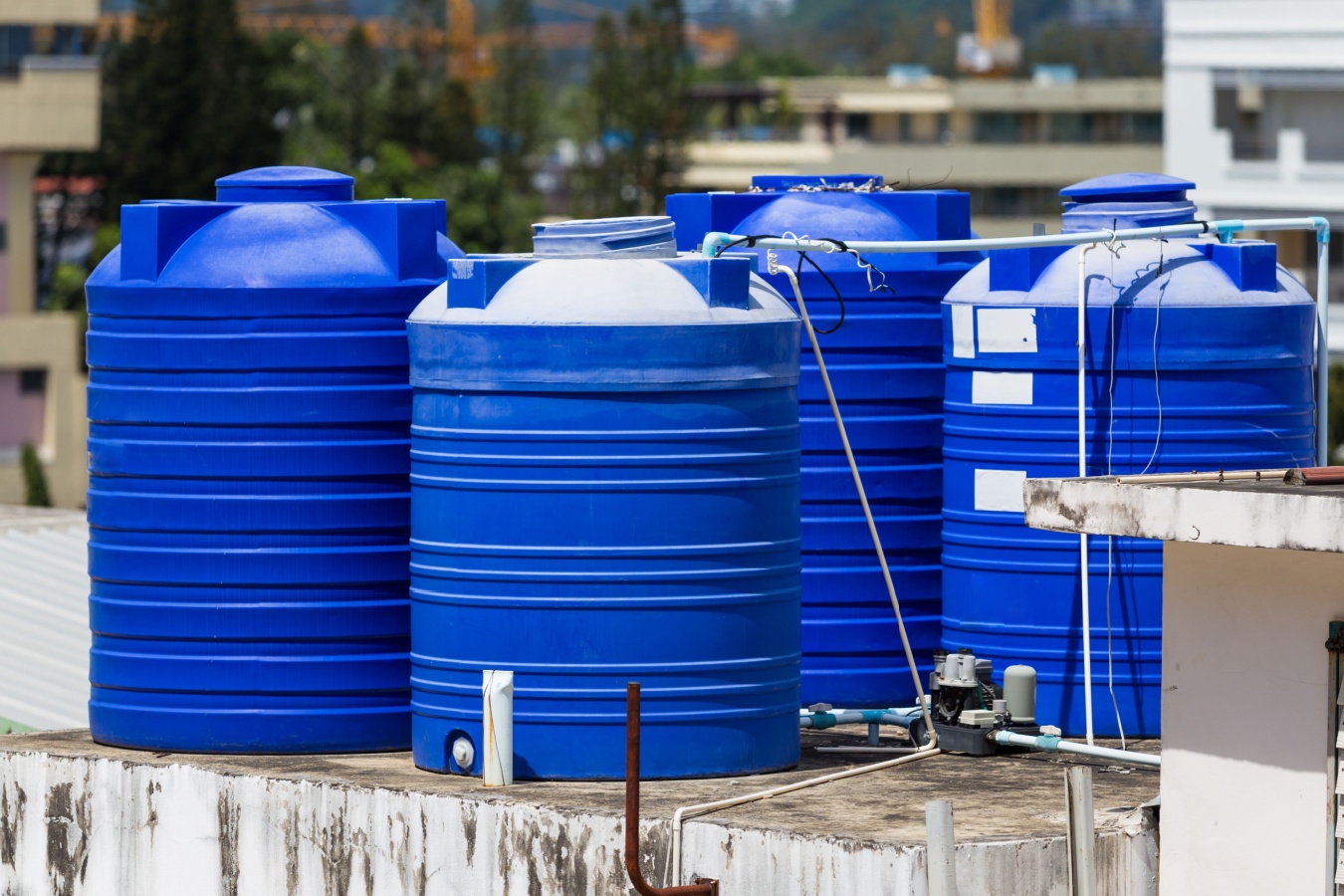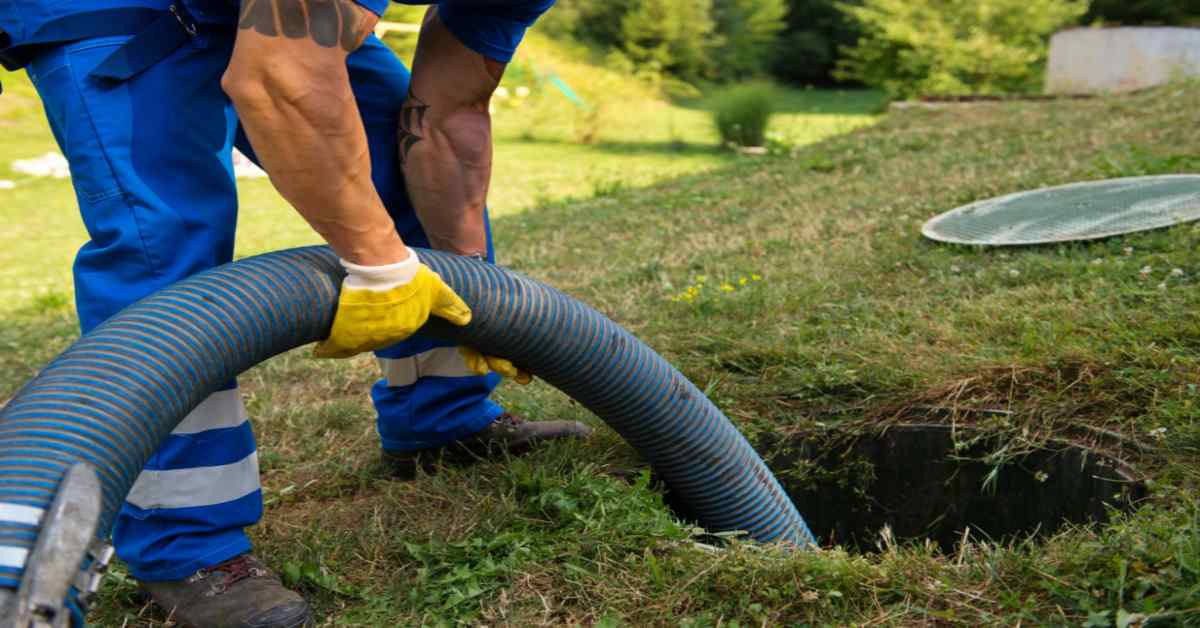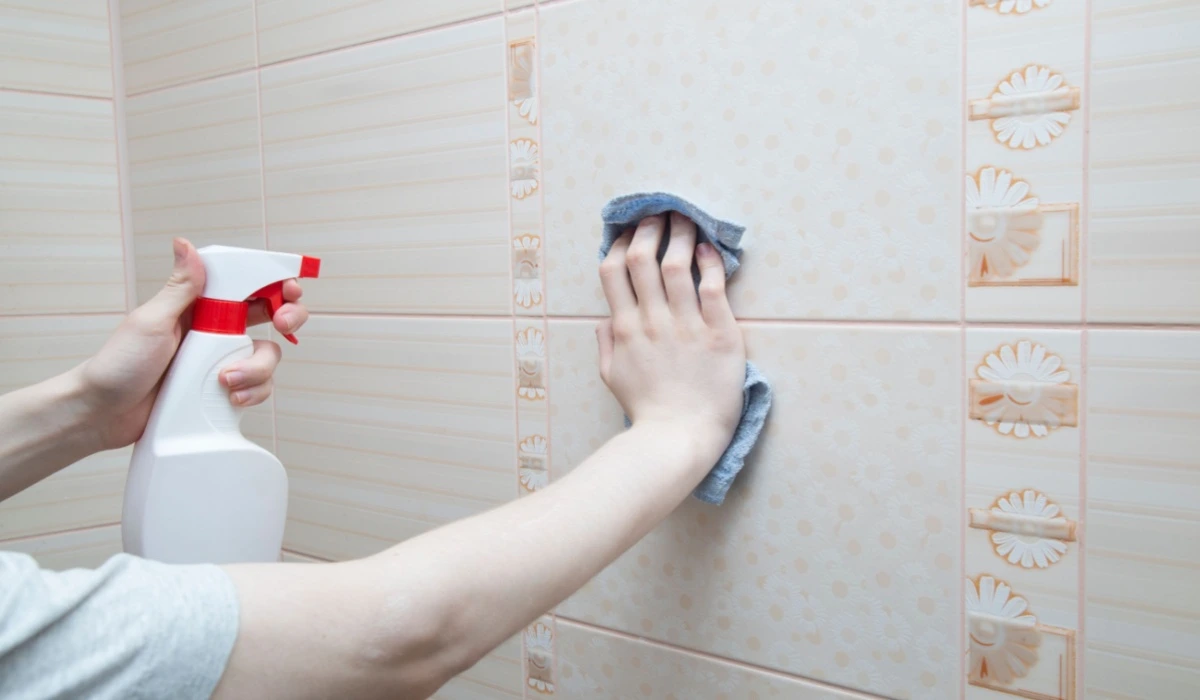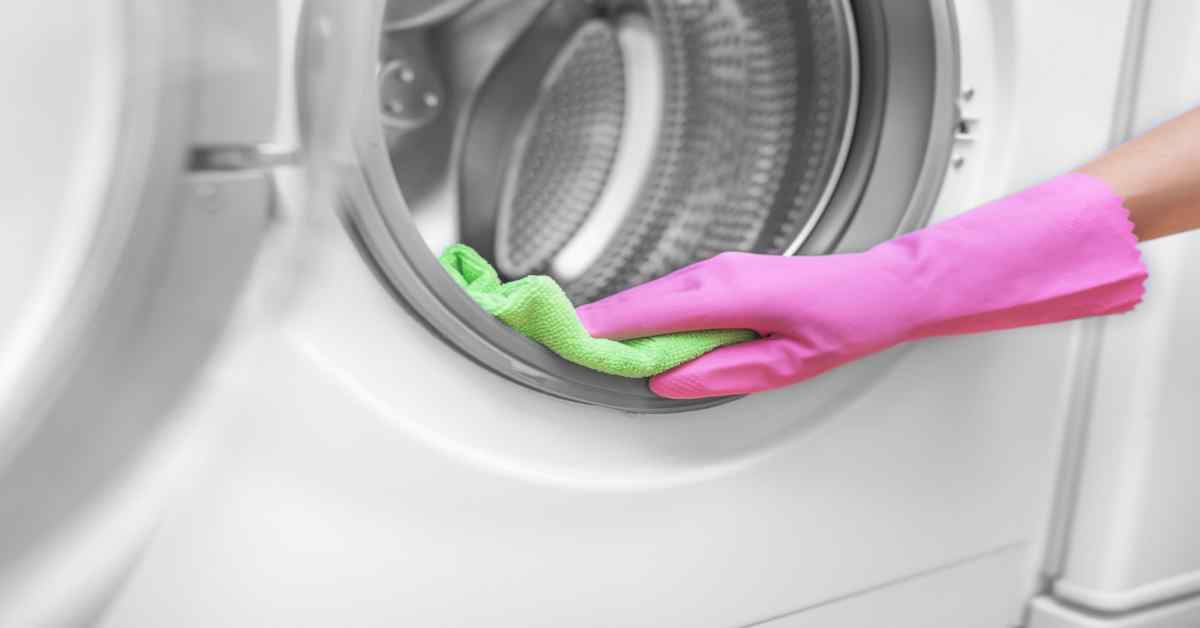Table of Contents
Quality Service Guarantee Or Painting Free

Get a rental agreement with doorstep delivery

Find the BEST deals and get unbelievable DISCOUNTS directly from builders!

5-Star rated painters, premium paints and services at the BEST PRICES!
Loved what you read? Share it with others!


Submit the Form to Unlock the Best Deals Today
Check Your Eligibility Instantly

Experience The NoBrokerHood Difference!
Set up a demo for the entire community
How to Clean a Sintex Water Tank at Home: Step-by-Step Guide
Table of Contents
Regularly cleaning your Sintex water tank at home is crucial for ensuring safe drinking water and protecting your family's health. Over time, tanks can accumulate sediment, bacteria, and algae, potentially contaminating your water supply. By following these instructions provided in this guide on how to clean Sintex water tank at home, you'll maintain a hygienic water storage system, prevent waterborne illnesses, and extend the lifespan of your tank.
Tools and Materials You’ll Need to Clean Sintex Water Tank at Home
Properly cleaning your Sintex water tank requires the right tools and materials. This section outlines essential cleaning supplies, safety equipment, and eco-friendly alternatives for understanding how to clean Sintex water tank.
- Cleaning solution: Choose between bleach or a commercial tank cleaner for effective disinfection. For an eco-friendly option, consider using white vinegar or food-grade hydrogen peroxide.
- Scrub brushes: Invest in long-handled brushes with stiff bristles to reach all corners of the tank. Include a smaller brush for detailed cleaning of fittings and tight spaces.
- Protective gear: Wear rubber gloves to protect your hands from cleaning chemicals and potential contaminants. Don't forget to use safety goggles to shield your eyes from splashes.
- Buckets and sponges: Have clean buckets for mixing cleaning solutions and rinsing. Pair these with soft sponges for gentle scrubbing of sensitive areas.
- Water pump or hose: Use a submersible pump to drain the tank quickly and efficiently. Alternatively, a long hose can help with both draining and rinsing processes.
How to Clean a Sintex Water Tank at Home: Step-by-Step Process

Regularly cleaning your Sintex water tank is crucial for maintaining safe, clean water for your household. This guide outlines a simple yet effective process for how to clean a Sintex tank at home, ensuring your water storage system remains hygienic and functional.
Quality Service Guarantee Or Painting Free

Get a rental agreement with doorstep delivery

Find the BEST deals and get unbelievable DISCOUNTS directly from builders!

5-Star rated painters, premium paints and services at the BEST PRICES!
Now, let's dive into the step-by-step process of how to clean a Sintex water tank at home:
Step 1: Drain the Tank
Start by turning off the water supply and disconnecting any electrical connections. Open the outlet valve to drain the tank completely. If your tank doesn't have a valve, use a submersible pump to remove the water.
Step 2: Prepare for Cleaning
Before entering the tank, ensure proper ventilation. Wear protective gear including gloves, goggles, and non-slip shoes. Use a sturdy ladder to safely access the tank's interior.
Step 3: Scrub the Interior
Using a long-handled brush and a mild detergent solution, scrub the entire interior surface of the tank. Pay special attention to corners, joints, and any visible sediment or algae growth. For stubborn stains, a mixture of baking soda and water can be effective.
Step 4: Disinfect the Tank
After scrubbing, rinse the tank with clean water. Then, apply a disinfectant solution. For a Sintex tank, you can use a mixture of 1 part bleach to 50 parts waters. Alternatively, use a commercial tank cleaner following the manufacturer's instructions. Let the solution sit for at least an hour to ensure thorough disinfection.
Step 5: Rinse Thoroughly
After disinfection, rinse the tank multiple times with clean water. Use a hose or buckets to ensure all surfaces are thoroughly rinsed. Continue rinsing until you can no longer smell any cleaning agents.
Step 6: Refill and Test
Once you're satisfied with the cleaning, close all valves and begin refilling the tank with fresh water. After filling, test the water for any residual chlorine or unusual odours. If everything seems normal, your Sintex water tank is ready for use.
Why Regular Cleaning of Sintex Water Tanks is Essential?

Regular cleaning of your Sintex water tank is crucial for maintaining water quality and protecting your family's health. Whether you have an overhead or ground tank, proper maintenance prevents contamination, extends the tank's lifespan, and ensures a consistent supply of clean water for your household.
Benefits of regular Sintex water tank cleaning: improved health, extended tank lifespan, better water quality, enhanced safety, increased efficiency, and long-term cost savings.
Here are the key reasons why regular cleaning for Sintex water tanks is essential:
- Health Protection: Regular cleaning prevents the buildup of harmful bacteria, algae, and other microorganisms that can contaminate your water supply.
- Water Quality Maintenance: Over time, sediment, rust, and other impurities can accumulate in your tank, affecting the taste, odour, and clarity of your water.
- Tank Lifespan Extension: Regular maintenance, including cleaning, can significantly extend the life of your Sintex water tank.
- Efficient Water Flow: Accumulated debris can clog pipes and reduce water pressure. Cleaning your tank ensures efficient water flow throughout your home, maintaining consistent pressure and volume.
- Cost Savings: While there's an upfront cost to cleaning, it's far less expensive than dealing with waterborne illnesses or replacing a damaged tank.
How Often Should You Clean Your Sintex Water Tank?
Right frequency for cleaning your Sintex water tank is crucial for maintaining water quality and tank longevity. While the exact schedule may vary based on factors like water source, usage, and local climate, establishing a regular cleaning routine ensures your tank remains in optimal condition. Let's explore the recommended cleaning intervals and considerations.
Image caption: Recommended Sintex water tank cleaning frequency: every 6 months for optimal maintenance, with adjustments based on specific conditions and usage.
Here are key points to consider when determining Sintex water tank cleaning frequency:
- General Recommendation: As a rule of thumb, clean your Sintex water tank every 6 months. This frequency strikes a balance between maintaining water quality and practical maintenance efforts.
- High-Usage Households: If your household consumes a large amount of water or has many members, consider increasing the cleaning frequency to every 3-4 months. More frequent use can lead to faster sediment buildup.
- Water Source Considerations: Homes using hard water or water from wells may need to clean their tanks more frequently, possibly every 3 months, due to increased mineral deposits and potential contaminants.
- Visual Inspections: Perform a visual check of your tank every 2-3 months. If you notice discoloration, sediment, or algae growth, it's time for a cleaning, regardless of the last maintenance date.
- Seasonal Changes: In areas with significant seasonal variations, consider additional cleanings during transitions between seasons, especially before and after monsoons or heavy rainfall periods.
Special Tips for Cleaning Overhead Sintex Water Tanks
Cleaning overhead Sintex water tanks presents unique challenges due to their elevated position. This section provides essential tips on how to clean overhead Sintex water tanks safely and effectively, ensuring both the cleanliness of your water supply and your personal safety during the maintenance process.
- Prioritize Safety Equipment
- Use a sturdy, extendable ladder that reaches comfortably above the tank's access point.
- Wear a safety harness and secure it to a stable anchor point on the roof or structure.
- Ensure Proper Lighting
- Clean during daylight hours for better visibility.
- Use a waterproof headlamp for inspecting dark corners inside the tank.
- Use Long-Handled Cleaning Tools
- Invest in extendable brushes and squeegees to reach all areas of the tank.
- Consider a pressure washer with an extension wand for efficient cleaning.
- Implement a Buddy System
- Never clean an overhead tank alone. Have someone assist you from the ground.
- Maintain constant communication with your helper throughout the process.
- Drain Smartly
- Use a submersible pump to drain the tank instead of relying solely on gravity.
- Direct the drained water away from the building's foundation to prevent damage.
- Ventilate Thoroughly
- Open all access points and use a fan to improve air circulation before entering the tank.
- Wait at least 30 minutes after opening before entering to allow fresh air to circulate.
- Disinfect with Care
- When using bleach solutions, ensure the area is well-ventilated to avoid inhaling fumes.
- Rinse the tank multiple times to remove all traces of cleaning agents.
This guide on how to clean Sintex water tank at home help maintaining a clean water tank is crucial for your family's health and the longevity of your water storage system. Regular cleaning, ideally every six months, prevents bacterial growth, removes sediment, and ensures a consistent supply of safe, potable water. Whether you're dealing with an overhead or ground tank, following the proper cleaning steps—draining, scrubbing, disinfecting, and rinsing—is essential. Clean water is not just a convenience; it's a cornerstone of a healthy home environment. Stay vigilant, clean regularly, and enjoy the benefits of a well-maintained water supply system.
Frequently Asked Questions
1. How long does it take to clean a Sintex tank?
Ans: Cleaning a Sintex tank typically takes 2-4 hours, depending on size and contamination level. This includes draining, scrubbing, rinsing, and refilling. Larger tanks may require more time.
2. Can I use vinegar to clean my Sintex water tank?
Ans: Yes, vinegar is a safe and effective cleaner for Sintex tanks. Mix equal parts water and white vinegar, apply to surfaces, scrub gently, then rinse thoroughly before refilling.
3. Is professional cleaning necessary for larger tanks?
Ans: Professional cleaning is recommended for larger Sintex tanks, especially those over 5000 liters. Experts have proper equipment and expertise to ensure thorough cleaning and safety compliance.
4. How often should I clean my Sintex water tank?
Ans: Clean your Sintex tank every 3-6 months, depending on usage and water quality. More frequent cleaning may be necessary in areas with high sediment or if you notice changes in water quality.
5. What are the signs that indicate my Sintex tank needs cleaning?
Ans: Signs include visible sediment, algae growth, unusual odors, changes in water taste or color, and reduced water pressure. If you notice any of these, it's time to clean.
Recommended Reading

Septic Tank Cleaning Methods: How to Clean a Septic Tank?
January 16, 2025
5762+ views
Loved what you read? Share it with others!
NoBroker Cleaning Testimonials
Best cleaning service by nb. Would recommend others too
I recently used NoBroker Cleaning Services for a deep house cleaning, and I am quite satisfied with the experience. The booking process was smooth and hassle-free, and the team arrived on time as scheduled. The cleaning professionals were thorough and well-equipped, ensuring every corner of the house was properly cleaned. They paid attention to details, including dusting, mopping, and scrubbing hard-to-reach areas. My kitchen and bathrooms, in particular, were cleaned to a high standard, leaving them spotless and fresh. Overall, NoBroker Cleaning Services provided good value for money, and I would recommend them to anyone looking for a reliable and convenient cleaning service.
Very good cleaning service provider I required next time staff friendly
team was very good The service was very professional Very satisfied by the work
Very good professional work done by house cleaning. Worth every penny.
Best service
Easy hassle free service from booking to execution. The interaction with customer care and service person were pleasant. Satisfied by the cleaning, much recommended.
I really well experience with bathroom cleaning un believable work with good hygiene. I recommend to everyone. I will continue with bathroom cleaning from last 4 months.
Recently opted the cleaning services from no broker. The service was on time and really good with affordable price. The technicians are polite and did their job perfectly.
Nice work
The finest service with affordable cost. Great 👍 work done by these people. Always Recommended
Nice service
Awesome service .. they are so good and super fast and does cleaning awesomely perfect!!!!
Best deep cleaning service provider in pune .Very polite and professional in their work. Best complements to the entire team..
Best flat cleaning service provider in pune Very good service.... Very quick and neat and clean home..... It was shining like mirror.. Highly recommended.
Superb house cleaning service provider in wakad pune Kitchen cleaning was done very sincerely. All equipment and chemicals were got along by the team. Punctual, sicere, good work quality.
Best cleaning service in Pune. Timely work till customer satisfaction. Thanks to team.
Thank you, nobroker cleaning services for your outstanding service. Keep up the fantastic work!
There service are best compared to price. Time was always perfect. I really appreciate their team for perfection and much more
Awesome house cleaning service provider in pimple saudagar .I sincerely appreciate your work. you put so much effort into your work that the house is immaculate 👌👍 thank you for your great service you have been very professional in handling our needs thank you ☺️
I have availed service for terrace floor cleaning. The persons who came for cleaning were very professional. They performed the task very nicely.
Best ac service provider in pune .Nice Work Good AC Service Immediately Response On Time All Call Attend
Best ac service provider in pune .Nice Work Good AC Service Immediately Response On Time All Call Attend
Great ac repair and service in pune .Very professional they understand customers problems and relevant cost wise, also work wise the are exc8
Cleaning was done very effectively. The staff also is very humble and resolved all doubts about the task. Will definitely recommend to anyone requiring deep cleaning services
Best house deep cleaning provider in pune .I got reference from friends. I deep cleaned my house first time. And I am very glad that I picked them. No other company cleans wall. But Nobroker is very effiecient wall cleaner.
One of the best service provider in Pune. Quality of work
Best cleaning services provider in bangalore .superb services provided by her
Best cleaning service provider in bangalore.It was a wonderful experience. Their team spent full time without any hurry and cleaned all the corners of the house. They are polite and very supportive. All of them
As per our request, They clean excellent with speed and provide me Affordable Cleaning service provider in bengalore .I am completely impressed with their professionalism and customer service. Thanks
Nice service
Highly recommended for the people who are looking for for packers and movers in chinchwad
Nobroker Cleaning Services is the go-to company for all your cleaning needs. They have a dedicated team that goes above and beyond to ensure customer satisfaction.
NoBroker Home Service Office has been a game-changer in my property search. Their user-friendly platform, efficient customer service, and transparent deals make the home-hunting process a breeze. I found my dream home with ease, and their support team was always there to assist. Highly recommended for hassle-free property transactions!
I recently used nobroker services to have my house cleaned, and I must say, I was impressed with their work. The team was prompt, courteous, and professional
Had a fantastic experience with Nobroker. They have made our moving into a locked home, super swift and smooth. Very polite, knowledgeable and efficient folks.
We are quite satisfied of what we get. They are quite professional and sincere towards their work.well done nobroker team
Nice job
Nice experience with Nobroker Cleaning service
Most Viewed Articles

Diwali Cleaning Tips and Guide: Make Your Home Shine for the Festival in 2025
January 31, 2025
14218+ views

How to Clean Bathroom Tiles: Easy and Effective Methods for a Sparkling, Hygienic Bathroom for 2025
January 15, 2025
11277+ views

How to Clean Kitchen Exhaust Fan Properly?
January 15, 2025
9093+ views

Deep Clean Your Washing Machine: Step-by-Step Guide & Tips
January 31, 2025
8746+ views

January 31, 2025
8397+ views
Recent blogs in
Bathtub Cleaning Solutions: Step-wise Cleaning Methods to Keep Your Tub Sparkling Clean in 2025
February 24, 2025 by Krishnanunni H M
Top 10 Bathtub Cleaner Liquids With Prices in India: Benefits and Uses in 2025
February 24, 2025 by Kruthi
Top 10 Marble Cleaning Liquids with Prices in India in 2025
February 23, 2025 by srivalli susarla
How to Clean Couches at Home: Effective Tips for Every Couch Material in 2025
February 23, 2025 by Kruthi
Top 10 Floor Cleaner Liquids with Prices in India 2025
February 23, 2025 by Kiran K S





Join the conversation!